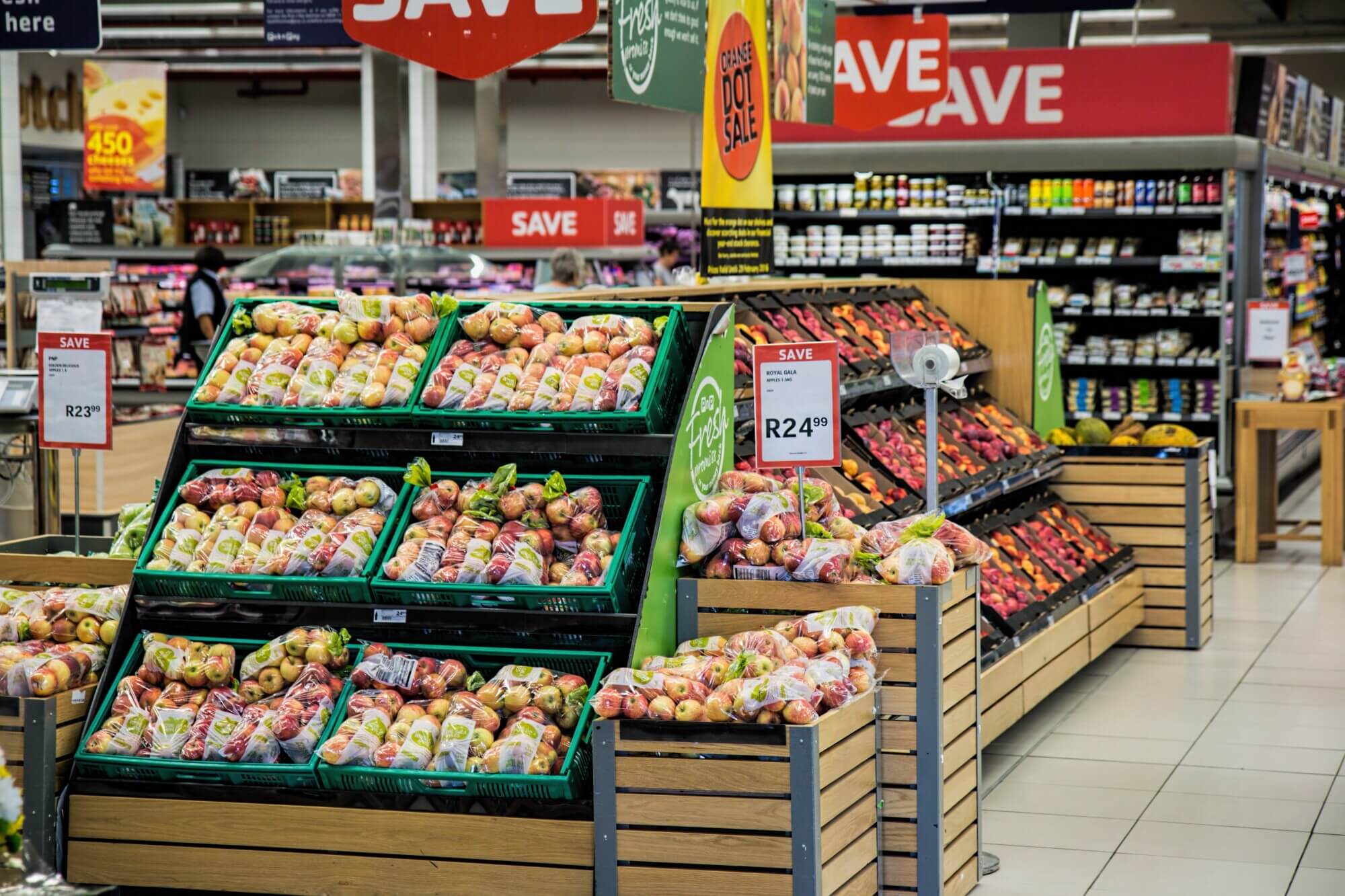
April 2, 2021
Grocery Temperature Monitoring: How Your Food is Kept Safe
Without temperature monitoring, the foods you buy at your local grocery store would be hotbeds for dangerous bacteria. The kind of bacteria that can lead to serious illnesses and multiple infections.
Fortunately, there are food safety standards in place at every step of the production chain to minimize risks. This is true at grocery stores too.
Your local grocery store can keep you safe from dangerous illnesses. Here’s how they do it.
Food Safety Is Important at Every Step of the Food Production Chain
First, let’s talk about food safety. Food safety starts before your food arrives at your local grocery store. That’s because contamination can occur at any point during the food production chain.
Food could become contaminated in many ways. It could happen at the farm, at a food processing facility, during transportation or storage, or at a restaurant or grocery store. That’s why food must be properly stored at each stage.
Just because your food has arrived at the grocery store doesn’t mean it is safe from contamination. It may have been safe at every point in the supply chain until then, but it can still become contaminated.
That’s why food safety at the grocery store is so important. It’s the last step in ensuring customers have access to safe food.
The Danger Zone
A large part of food safety is avoiding the “danger zone.” The danger zone is the temperature range between 41 and 135 degrees Fahrenheit. When cold foods exceed this temperature, or hot foods fall below this range, food is dangerous.
Once food falls in the danger zone temperature, there is a chance for bacteria to grow. That’s why it is important to minimize the amount of time food is in the danger zone.
What Is Food Contamination?
Food contamination occurs when food becomes compromised and corrupted. This could be by a chemical, biological, or physical substance.
Physical contamination is contamination by a foreign object. This could include pieces of plastic.
Chemical contamination is when a chemical substance contaminates food. This could be any chemical, many of which are toxic.
Biological contamination is when bacteria and viruses contaminate food. Biological contamination is the most common type of food contamination. It often results in food poisoning or illness.
There’s also cross-contamination. Cross-contamination is the transfer of bacteria from one source to another. For example, raw poultry bacteria can spread to other sources such as vegetables if the same cutting board or countertop is used for food prep.
The Dangers of Food Contamination
Every year food contamination results in 600 million people falling ill. From some perspective, that’s almost 1 in 10 people worldwide.
Salmonella, E. Coli, and Listeria are some of the most common bacteria involved in foodborne illnesses.
Salmonella infection is caused by eating undercooked or raw meat or egg products. Salmonella symptoms can include nausea, vomiting, diarrhea, fever, chills, headache, or bloody stool.
E . Coli infection is caused by exposure to bacteria in food. This can happen with improper food processing or contaminated water.
It can even spread from one person to another if they don’t wash their hands after using the bathroom. An E. Coli infection can cause nausea, vomiting, diarrhea, and stomach pain.
Listeria infection is caused by ingesting infected meat, unpasteurized milk, and contaminated vegetables. A Listeria infection can cause muscle aches, chills, fever, nausea, and diarrhea.
E. Coli and Salmonella can infect anyone, but Listeria infection occurs most often in those with weakened immune systems. While healthy adults can get it, they rarely become seriously ill. Still, even in an otherwise healthy adult, a mild cause of Listeria can cause an illness that lasts for several days.
Grocery Temperature Monitoring & Safety
When it comes to monitoring grocery temperatures, there are three broad categories that goods fit into. Each one has specific temperature needs.
Refrigerated goods are stored between 32-40 degrees Fahrenheit. Frozen goods are stored below 0 degrees Fahrenheit.
Even dry goods need to be stored at specific temperatures. The temperatures for dry goods might not be as strict as they are for frozen or refrigerated goods. However, they are generally stored in the 50-70 degree Fahrenheit range.
Temperature Monitoring Systems and Food Safety
When it comes to food safety, the best way to prevent foodborne illnesses and keep customers safe is prevention. Food in the danger zone is susceptible to bacteria growth, so the best way to prevent bacteria growth is temperature monitoring.
Data loggers are a type of temperature monitoring device. Data loggers placed throughout a storage area ensure that the proper temperature is being maintained. Some data loggers are equipped with alarms, allowing them to sound when the proper temperatures have been violated.
Other methods of temperature monitoring include temperature probes. Smart temperature probes will even integrate with smartphone apps. This allows for temperature recording and immediate pass/fail detection.
HACCP and the Retail Space
Many modern temperature monitoring systems are part of a HACCP management system. HACCP stands for Hazard Analysis Critical Control Point. HACCP is an internationally recognized method of managing food safety.
Not All Temperature Monitoring Systems Are Equal
Of course, temperature monitoring doesn’t mean much if the devices you are using aren’t accurate. A malfunctioning or inaccurate device could mean an inaccurate temperature reading of a few degrees. This is enough to allow bacteria to grow and fester, especially if it’s over a few hours.
Likewise, if your instruments are too hard to use or read, implementing them won’t do much good if your employees can’t use them.
That’s where SensoScientific’s instruments come in. Our products can help you meet HACCP compliance and automate your food safety checklist. We can save your employees time and help you keep your customers safe from potentially deadly food contamination. This makes us the leading choice for simple, accurate, and reliable grocery temperature monitoring.
Contact us to find out more about our temperature monitoring systems and how they can help you.